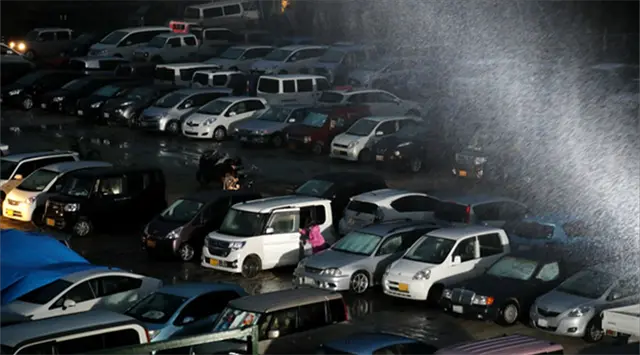Although power and water supply services are gradually recovering, many evacuees from the Kumamoto earthquake disaster are too traumatized to return to their homes.
Around a dozen parked vehicles at a playground in Kumamoto city’s Chuo Ward contain residents from a nearby public apartment complex.
Even a week after the first major tremor struck the central Kyushu region on the evening of April 14, these residents still prefer to sleep in their cars instead of going home.
Some say they want to remain outdoors because the continued aftershocks remind them of terror of the earlier strong quakes, including the magnitude-7.3 main temblor that rocked their homes on April 16.
Toru Nasu, a 68-year-old resident of the apartment complex, has opted to live out of his family’s minicar at the playground, despite having to use a wheelchair due to an illness.
Nasu, his wife and two children can return to their apartment room on the second floor, but they have stayed in the car since April 15.
With his wheelchair parked outside the family’s car, Nasu spends all day in the front passenger seat because it is difficult for him to move around without support.
Nasu’s 43-year-old daughter, Emi, has twice had her father sleep in their apartment room because she was concerned about bedsores and possible life-threatening blood clots from “economy-class syndrome.”
But Nasu could only stay about an hour in the room because sleeping there reminded him of his terrifying experience when the first earthquake hit.
“I tell him it is OK because we are always sleeping side by side, but he apparently cannot get rid of his fear over staying inside our home,” Emi said.
Around 90,000 people were still living in evacuation in Kumamoto and other prefectures on April 21.
(ASAHISHINBUM)
 简体中文
简体中文

